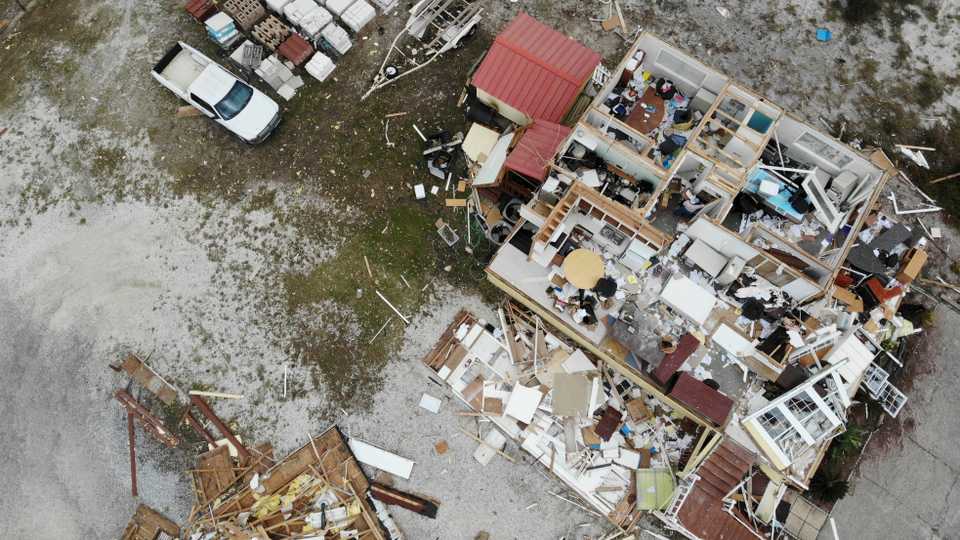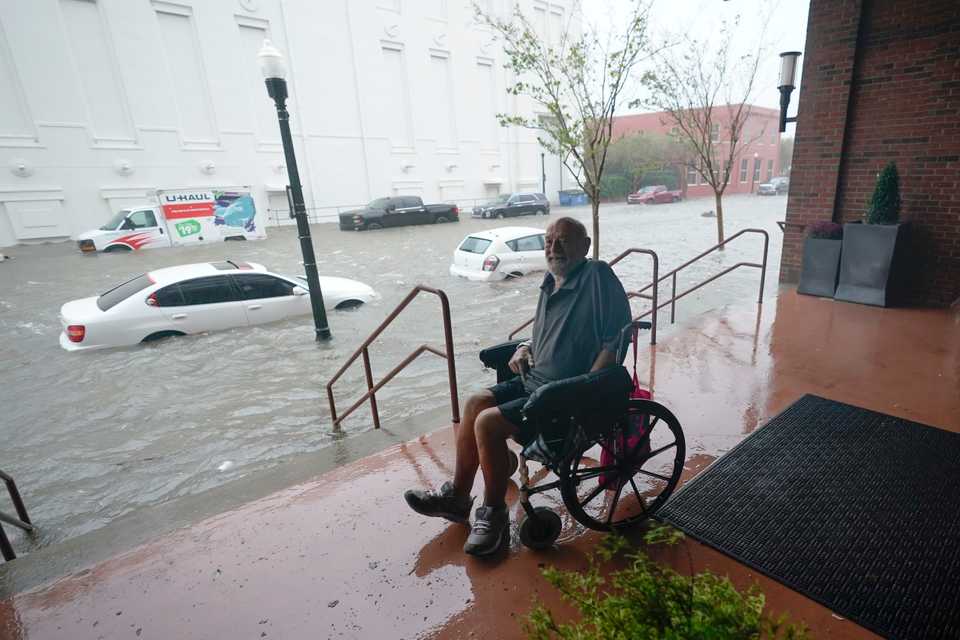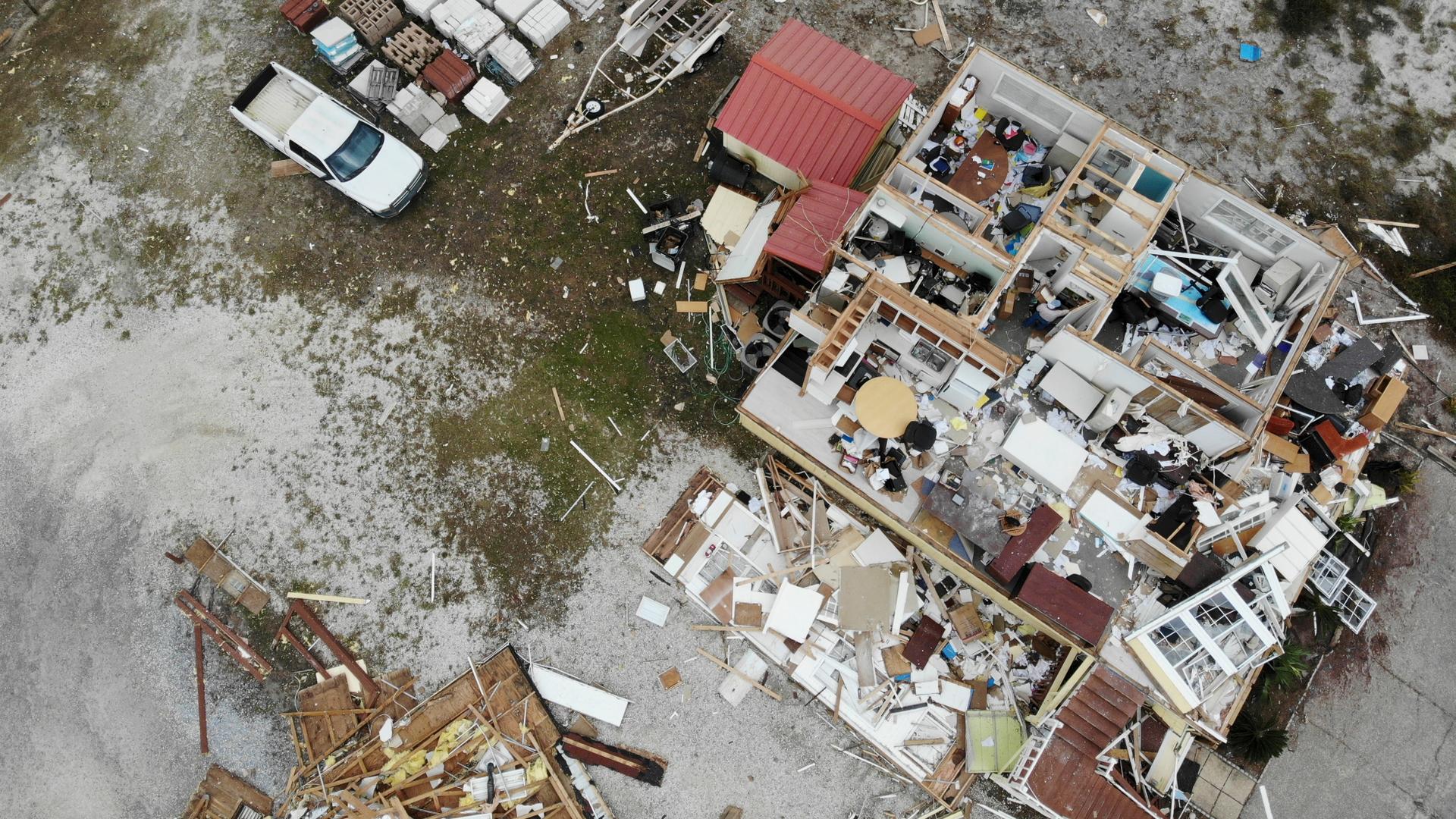
Rescuers along the Gulf Coast have used high-water vehicles to reach people cut off by flooding in the aftermath of Hurricane Sally, even as the region braced for a delayed, second round of floods in the coming days from rivers and creeks swollen by the storm’s heavy rains.
Across southern Alabama and the Florida Panhandle, homeowners and businesses began cleaning up, and officials inspected bridges and highways for safety, a day after Sally rolled through with winds up to 165 kph and 1 to 3 1/2 feet (0.3 to 1 metre) of rain in many places before it began to break up.
Its remnants continued to push deep inland with heavy downpours, threatening flooding across the South all the way to Virginia.
In hard-hit Pensacola and surrounding Escambia County, where Sally’s floodwaters had surged through downtown streets and lapped at car door handles on Wednesday before receding, authorities went door-to-door to check on residents and warn them they were not out of danger.
READ MORE: Hurricane Sally drenches US Gulf coast, trapping hundreds
‘Not out of woods’
At least eight waterways in Alabama and the Panhandle were expected to hit major flood stage by Thursday. Forecasters warned that some could break records, submerge bridges and swamp homes.
“Please, please, we’re not out of the woods even if we’ve got beautiful skies today,” said Escambia County emergency manager Eric Gilmore.
Crews carried out at least 400 rescues in the Escambia County by such means as high-water vehicles, boats and water scooters, authorities said.
Rescuers focused their efforts Thursday on Innerarity Point, a narrow strip of land close to Pensacola that is home to waterfront homes and businesses. Floodwaters covered the only road out, though authorities said no one was in immediate danger.
READ MORE: Two tropical storms to hit US coast two days apart with hurricane force

Hundreds rescued
Richard Wittig and his family were among scores of people hemmed in by floodwaters on the island. Two generators were powering his house, fueled by 30 gallons of gasoline Wittig bought ahead of the storm.
“If I didn’t have a working generator, we’d be dead. Nobody can get to us,” said the 77-year-old Wittig, who said he and his son rely on oxygen machines to keep them alive.
The Florida National Guard said it had deployed about 500 soldiers and airmen to help local authorities evacuate 113 people, though it did not say when and where the rescues took place.
In Alabama, on both sides of Mobile Bay, National Guard soldiers from high-water evacuation teams used big trucks Thursday to rescue at least 35 people, authorities said.
About 56 kilometres inland, a swollen Murder Creek cut off access between the Alabama towns of Brewton and East Brewton, inundating a grocery store, a tobacco shop, a park and more. Residents behind a police roadblock gazed at the neighbouring city across fast-moving water covering a bridge.
“Mama, look. Water’s all the way up in here!” 11-year-old Rachana Matthews said.
East Brewton resident Brenda Davenport said it took only four hours for the water to rise. “It could take two days for it to go down,” she said.
Picking up soggy debris in her yard in Orange Beach, Alabama, Janice Sullivan swore she would never ride out a hurricane again. She and her daughter huddled in a second-floor bathroom as Sally blew ashore. The winds grew so violent Sullivan feared the roof would fly off.
“You could hear everything hitting the house,” she said. “You could hear the house moving back and forth. It was literally moaning and cracking.”
READ MORE: Several dead as hurricane Laura batters US state of Louisiana
One killed in Alabama
At least one death, in Alabama, was blamed on the hurricane, and a half-million businesses were without electricity Thursday afternoon in Florida, Alabama and Georgia. A section of the main bridge between Pensacola and Pensacola Beach collapsed after it was hit by a barge that broke loose during the storm.
A few people cleaned up in Bristol Park, a creekside neighbourhood where as much as 4 feet (1.2 metres) of water-filled brick homes north of Pensacola.
Susan Cutts’ parents fled rising water inside their home into the garage, where they desperately called for help on a dying cellphone until aid arrived.
“They were on top of their car when they got to them,” Cutts said.
At a downtown marina, at least 30 sailboats, fishing boats and other vessels were found clumped together in a mass of fibreglass hulls and broken docks. Some boats rested atop sunken ones.
The hurricane also drove two large ferry boats into a concrete seawall and left them grounded. The boats had been purchased with BP oil spill money.
“This is kind of the initial salvo,” Florida Gov. Ron DeSantis said of the hurricane’s onslaught, “but there is going to be more that you’re going to have to contend with.”
Meanwhile, Sally’s rainy remnants caused flooding in Georgia, closing streets and highways, and threatened more of the same on Friday in North Carolina and Virginia. Forecasters said Georgia could get up to a foot (30 centimetres), and South Carolina 10 inches (25 centimetres).










Discussion about this post